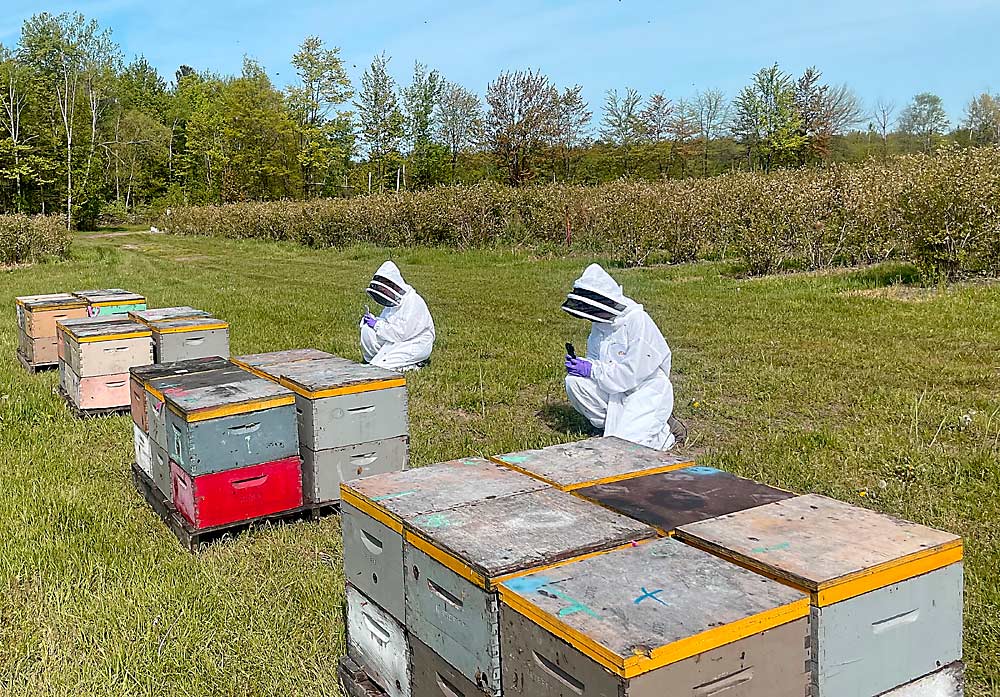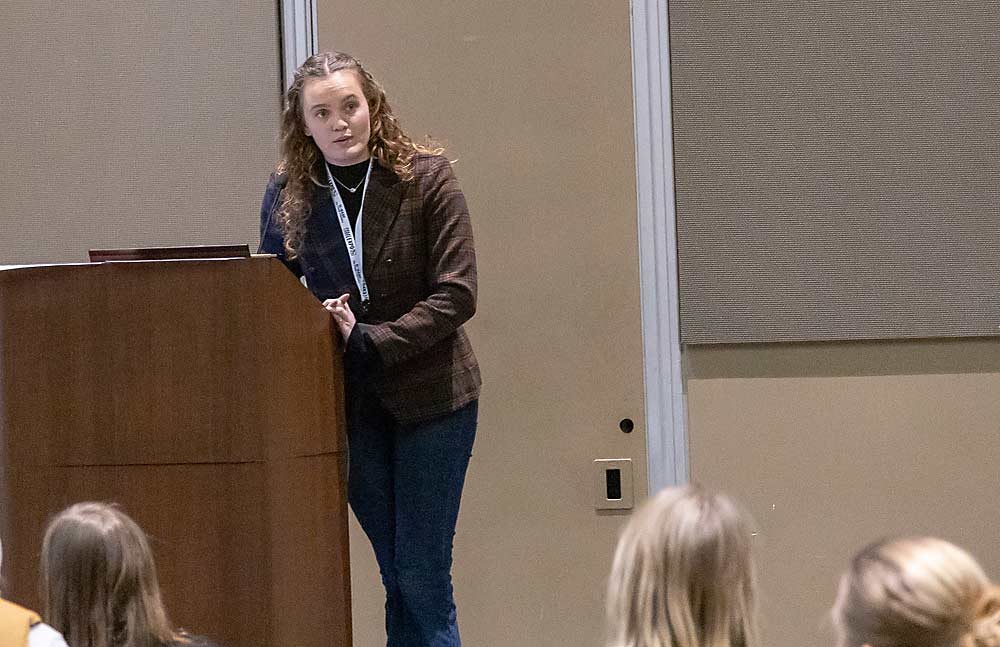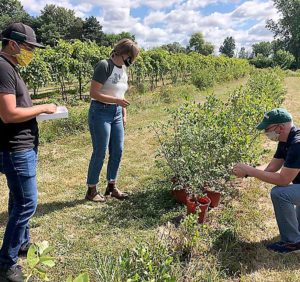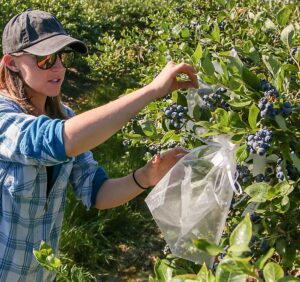
To measure the effectiveness of honey bee pollination, blueberry growers often turn to stocking density, or the number of hives per acre.
But pollinator effectiveness depends on the number of bees more than the number of hives, said Lauren Goldstein, a research technician and manager of Michigan State University’s Isaacs Lab, which studies entomology and pollination in berries. She calls that approach stocking strength.
Goldstein takes the average number of colonies per acre (stocking density) and multiplies that by the average number of bees per colony (colony strength). That number gives a much better indication of pollinator effectiveness than hive density alone. Measuring the population of honey bee colonies is a common practice in the California almond industry, she said.
During a Great Lakes Fruit, Vegetable, and Farm Market EXPO presentation in December, and in a follow-up interview with Good Fruit Grower, Goldstein discussed the importance of better bee numbers. She spent 2021 and 2022 as part of a team studying the effects of hive strength, number and placement on pollinator effectiveness in Michigan blueberry farms. The research was part of a multistate pollination project funded by a $2 million grant from the U.S. Department of Agriculture’s Specialty Crop Research Initiative.
The MSU researchers found that it’s the total number of bees that matters — and counting hives isn’t a particularly effective way to assess that because the number of bees in a colony can range from 10,000 to 60,000.
Economically, it probably makes more sense to have fewer but stronger hives in the field (if the beekeeper charges the same price per hive), but the goal is to increase the number of bees per field — whether that’s with more bees per hive or more hives per acre, she said.
Typical stocking densities in Michigan blueberry fields range from one to five hives per acre. A strong colony has many bees of foraging age (the bees that actually leave the hive to move pollen around), and enough eggs and larvae to sustain its growth and productivity.
“Colony strength can provide us a measure of productivity and health, as well as offer a prediction of the number of honey bees available to move pollen,” she said.

Michigan blueberry growers will often increase the number of hives to improve pollination, but that might not make much difference if the hives are weak. She gave an example: Say field A is stocked at three hives per acre, while field B has four hives per acre. The hives on field A average about 50,000 bees per colony, while the hives on field B average about 10,000 bees per colony. Despite having one less hive per acre, field A has almost quadruple the number of bees.
So, if growers want to increase stocking density to improve pollination, they can do that with strong colonies. Growers shouldn’t open up colonies without beekeeper permission, but there’s a simple, noninvasive way to assess colony strength, she said.
Goldstein recommended an assessment method she learned from researchers in Washington and Oregon. Called the returning forager count, it’s done by observing the hive entrance and counting the number of foragers that return over a one-minute period. It’s best to count foragers from a vehicle (with the windows rolled up) or standing nearby (in a bee suit) on a calm spring day that’s suitable for bee flight, she said.
If there isn’t much flight activity, she recommends talking with the beekeeper to make sure stronger hives are placed the following season.
During the Michigan blueberry study, the team found that the average number of returning foragers was related to the number of bees per flower. They also found that more bees are needed to get adequate pollination during periods of rapid heat accumulation.
In 2021, warming was gradual and consistent through early May, but 2022 saw a rapid rise in temperature during bloom, which resulted in a large number of flowers opening at the same time. At one sampling point, where colony strength was the same in both seasons, there were twice as many open flowers in 2022 as there were the year before, and not enough bees to visit them all. Because there were fewer flowers open at one time, there were more bee visits per flower in 2021. Blueberry yields were also higher in 2021.
“I wouldn’t be surprised if this was the result of more bee visits per flower,” Goldstein said.
—by Matt Milkovich








Leave A Comment